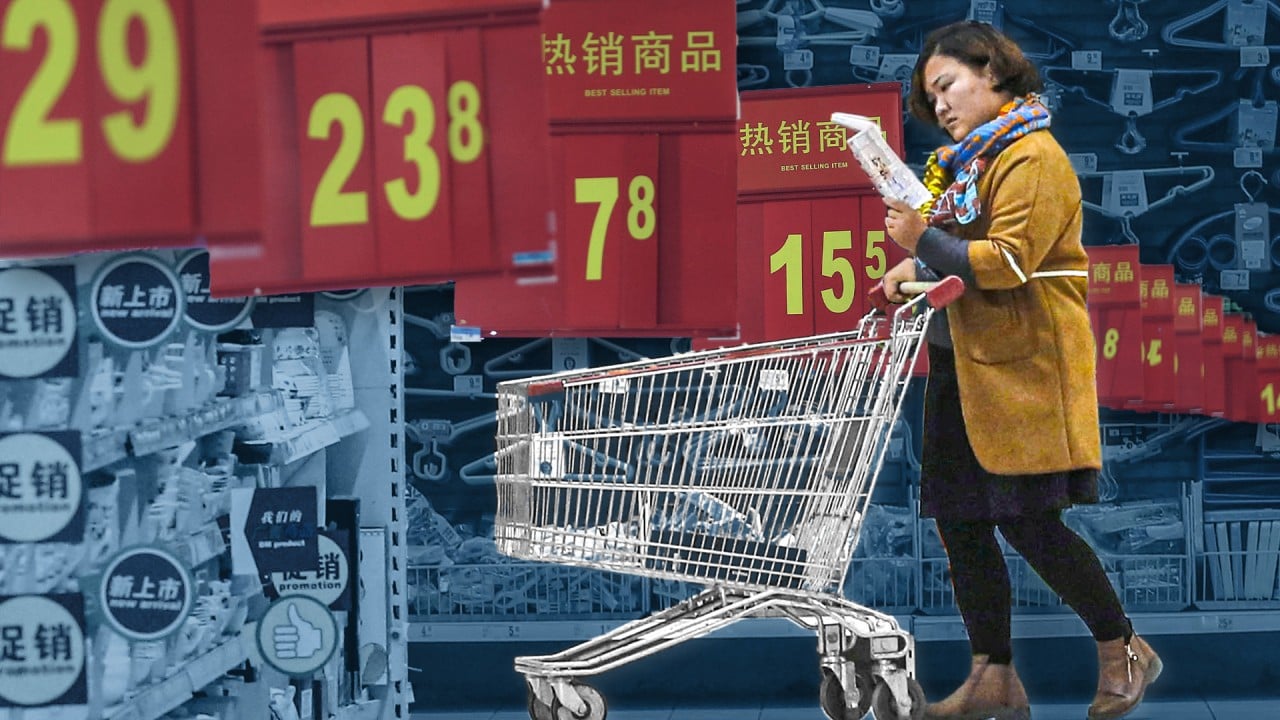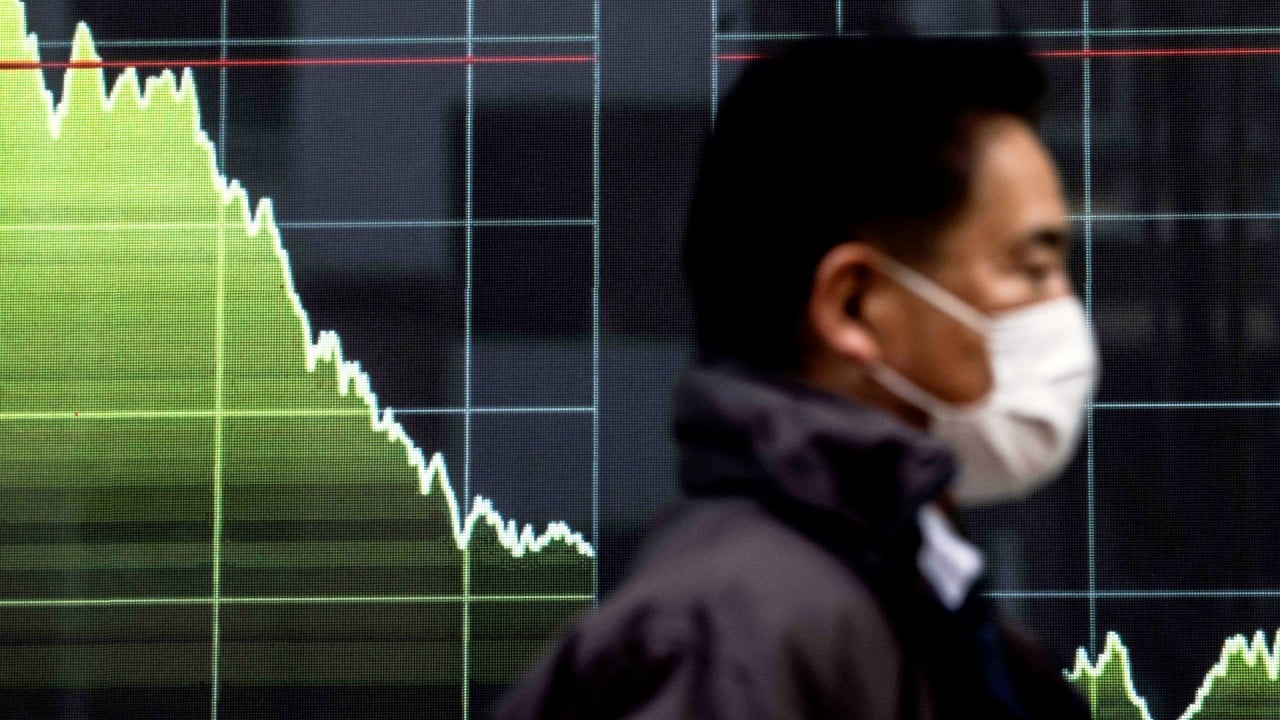
Now, nearly 11 years later, I would have to say that while the Chinese economy has progressed on many fronts, the implementation of those reforms has been disappointing.
I think the critique that was raised by former Premier Wen Jiabao in March of 2007 – when he warned that the Chinese economy, while strong on the surface, was “unstable, unbalanced, uncoordinated and unsustainable” – those issues remain unresolved. In particular, I think failure of the third plenum of November 2013 was more on the structure of the demand side – the incredibly low level of household consumption as a share of GDP. That has not been addressed and that remains an enduring problem for China’s structural reform imperatives.
What, then, do you think have been meaningful structural changes?
But I think the biggest change in my view, over that period, has been the recognition that the focus needs to shift, and in many respects has shifted from the quantity to the quality of growth.
There comes a point, as I think Xi indicated in a recent article in the party journal Qiushi, that when the expansion of quality reaches a certain stage, that it is critically important to focus on quantity.
The quality of growth I think is best addressed, as Xi has put it, through boosting total factor productivity (TFP). That is a big challenge for China because TFP has now been declining for about a decade. It is critically important that it be reversed in China and return to a phase of increasing TFP as was evident in the first decade of this century.
TFP growth was very strong starting in 2000, coinciding with the aftermath of China’s accession to the World Trade Organization.
Reading from the Penn World Table, from 2000 to 2010, the average growth rate was 4.6 per cent. It was spectacular. And then from 2011 to 2019, a nine-year period, TFP declined by 1.4 per cent on average.
In looking at sort of the early indications of where the third plenum of 2024 is headed, and I tried to read the party journal Qiushi as much as I can, the focus seems much more on the supply side than on the demand side.
I don’t minimise the importance of focusing on the supply side, especially the high quality development that Xi continues to emphasise through new productive forces. He indicates in his own statements and supporting articles that the emphasis is very much aimed at boosting total factor productivity, which is important. So I’m not critical of that.
But what is missing is an equal focus on the demand side, especially internal private consumption, where the share of GDP remains below 40 per cent. I think this is a serious challenge that was not taken up in the third plenum of 2013, and I hope it would be given much more focus in next month’s third plenum.
You refer to TFP a lot when discussing China’s economy. Can you explain why that is a significant metric?
First of all, it’s the broadest measure of improved efficiency in any economy – China, the US, Europe, Japan. It is the output that is produced in excess of the contributions made by increased employment and increased investment. It reflects the magic of innovation, technological change, the emergence of new industries, the power of entrepreneurial spirit – all of which combine to create economic output beyond that which can be accounted for just by increasing the factors of production: land, labour and capital. So, it’s a very important and broad measure of the magic of economic growth and development.
So when an economy is experiencing a declining population among its working age cohort, the only way that it can really boost or support strong economic growth is by increasing productivity. When the workforce is declining, productivity growth is absolutely critical for getting more out of the economy.
We learned that painfully in watching the three last decades of economic growth in Japan, where their working-age population peaked in the 1990s as Japanese TFP growth was stagnating. And so the failure of Japan to offset the weak population by increased TFP was a critical structural impediment to economic growth. While China is not Japan for many reasons, it is facing a similar challenge with a declining working age population and weak TFP. There is a certain urgency here to facing up to that.
How does China’s TFP reflect the challenges faced by the Chinese economy?
What we’ve seen in recent years is a shift in the mix of industries in China, away from private sector companies, back to state-owned enterprises. Historically, state-owned enterprises have much lower productivity growth than the privately owned enterprises. If this trend, which has been evident in the last several years, continues, then China risks shifting the structure of its economy to its low-productivity growth sector. That would really complicate President Xi’s objectives to boost overall TFP.
The final thing I will say about this is that the private sector, over the past three years, has been under increased regulatory scrutiny, especially the internet platform companies. Historically, these are the highest productivity growth segments of the Chinese economy. So that clearly needs to be addressed if China is to put in place reforms that unleash or unshackle the “animal spirit” of high productivity growth from private enterprises.
So, I’m pleased that there is focus on TFP but it’s almost urgent, trying to deliver reforms that are aligned with a resumption of strong TFP growth, especially in the current climate of an ageing and shrinking working age population.
At the moment, land reform, power system reform, corporate governance, technological self-reliance, and tax reform are believed by many to be on the cards at the third plenum. How do you expect these issues to be addressed?
I think there’s a likelihood that there will be a large number of reforms that touch on most, if not all the issues that you mentioned and even far more than that. I think that’s encouraging. But again, I have a pretty narrow focus on what I’m looking for in the third plenum reforms.
What I would like to see is a focus on two major objectives. One, boosting TFP for the reasons that I’ve already articulated, but secondly, boosting private household consumption. TFP without consumption is a recipe for continued unbalanced growth in China, which ultimately is not sustainable, and would be a worrisome outcome.
What I’m hopeful for would be a more balanced economy, where the consumption share of Chinese GDP is well above 45 per cent on its way to 50 per cent. If that is accompanied by a resumption of strong TFP growth, then, I think the structure of the Chinese economy will be in much better shape heading to all the important millennial targets of 2049 than is the case today.
China has been an investment-driven economy, especially when property and infrastructure construction were at their peak. By comparison, the US is a service-led economy. Now that China is attempting to transition more towards a service and consumer-driven economy, how can it be done – or at least fast-forwarded?
The main impediment to consumer-led Chinese economic growth that I have focused on – and I have written papers and made presentations in Beijing about this for years – is the lack of a strong social safety net, especially medical care and retirement.
As a result, there is an excess of household savings and that I think is a reflection of the fear of an uncertain future. Economists call that precautionary saving. The precaution comes for good reason, because the benefits are inadequate, especially now as workers and heads of household are getting older and the reality of retirement is, for many, extremely close at hand.
I would add a third aspect of the safety net issue which needs to be addressed, and that is the imperative of hukou [household registration] reform. Currently, there are nearly 300 million migrant workers lacking benefits in the cities that they’re working in. That also, I think, builds a bias toward excess fear-driven precautionary saving by this very large segment of the Chinese workforce. I think hukou reform should be an equally important aspect of the need to boost household consumption through structural reform.
What might be the consequences if China struggles to boost private household consumption to around 45 per cent, like you suggested? Does it increase the likelihood that it gets stuck in the ‘middle-income trap’?
I don’t think we really know the answer.
With China’s [global growth] share coming down, you have to ask yourself, who is filling the void?
But I think the consensus among economists, both inside and outside China, is that to keep pushing right now through this barrier that many have associated with the middle-income trap – correctly or not – requires a shift from imported to indigenous innovation. And I think if China fails at indigenous innovation – and there’s no reason to believe that’s going to be the case, as I think China’s progress on indigenous innovation is very, very impressive – that would be more problematic for a low- or middle-income trap than a failure to boost household consumption.
There is a notion that as long as China maintains gross domestic product growth of around 5 per cent annually in the short term, and at least 4 per cent growth until 2035, it can overtake the US to be the world’s largest economy. Can it?
The real question for the Chinese people, I think, is convergence on a per-capita basis. And that is not feasible for many decades, if at all. But in terms of nominal dollar base GDP, it is perfectly possible and quite likely that that will occur at some point in the 2030s. Whether it is the early part of the decade or the latter part of the decade is dependent on some of the things we’ve already discussed, especially the TFP issue and the rebalancing toward internal private consumption.
It is also dependent on the currency. The renminbi has been weak, and that has – together with a little bit of deflation, as measured by the GDP deflator in the past couple of years – caused many people, myself included, to push out the date of convergence from our earlier estimates.
What does it mean for China and the world if China’s growth continues to decelerate?
China had a period of spectacular growth from 1980 to 2011. And even after that, when the world was in the aftershocks of the global financial crisis, China’s power as an engine of global growth was extraordinary. By my calculations, from 2010 to 2019, China accounted for 32 to 33 per cent of cumulative growth in world GDP.
That was extraordinary, and an unprecedented contribution for any developing emerging economy in any historical context.
With China’s share coming down, you have to ask yourself, who is filling the void?
The one economy that stands out where the global growth contribution is now sharply on the rise is India. India is still contributing less to global growth than China. But if the International Monetary Fund’s forecast is to be believed, by the end of the 2020s, India and China will almost be on par in terms of their contributions to world GDP growth.
So it is not as if China has lost its role as the dominant source of global growth to the upstart Indian economy. But certainly China is not delivering to the extent that it did during that 10-year period from 2010 to 2019.
In the past year or so, there have been increasing concerns about China’s so-called overcapacity in the new energy sector. Do you share that view?
First of all, the accusation that any nation has excess capacity in green technologies at a time when the world is suffering horrific climate change is absurd. I mean, climate change itself is a visible sign that the world is deficient in the low-carbon capacity it needs to address a serious greenhouse emissions problem.
There can be no excess capacity in low-carbon alternative energy products in a world afflicted with the existential climate change that we are experiencing.
I don’t care who produces it, whether it’s China or North Korea or Russia, we need as much green technology as possible to address the problem. Politicians who want to restrict a nation like China, which provides green technology at low cost and high quality in areas like electric vehicles (EVs) and solar batteries, that is purely a political agenda that makes no sense from an economic comparative advantage point of view.
Now there’s one other aspect of this, and that is the excess capacity argument in the West, which goes after China for subsidising green technologies, whether they’re direct government subsidies or produced by subsidised state-owned enterprises.
And yet, the US is doing the same thing. We have rediscovered industrial policy with our own American characteristics – namely the Inflation Reduction Act, the tax credit that we’ve had in place for EVs, the massive federal loan that Elon Musk received from the federal government to build or to support Tesla during its more difficult years, the Chips and Sciences Act. We are just as aggressive and now subsidising industries that we think are just as vital to our competitive future as China does.
There is a clear hypocrisy in this notion of going after excess capacity.
Is that why you called the US’ recent tariff hikes on Chinese green technology a ‘blunder” in earlier public remarks?
It is a blunder for two reasons.
One, we’re protecting our own industries, which have been slow to get started and are not cost-efficient compared to their counterparts in China even after making adjustments for subsidies on both sides of the competitive spectrum. It is a blunder also because we are taxing green technology at a time when the world wants us to expand the supply of green technology to address an existential problem.
This could be a blunder of historic proportions for a variety of reasons, but those are the ones that I think are most important.
How has the US presidential election campaign weighed on US-China trade and economic relations? And how is that going to shape the relations of the two powers in the longer term?
There is no question that China will be a lightning rod in the next few months in this election campaign, and anti-China policies are attractive, unfortunately, to Republicans and Democrats alike. There are very few issues that have bipartisan support in the US political system other than going after China.
The big question I think will be – presuming we can make it through November without a serious problem – is what happens to US policies, US-China tensions post-November 2024. I remain very concerned. I think that we have really sort of crossed the threshold of finding a workable resolution of this conflict, unless we figure out a new way for the two countries to re-engage one another based on trust and collaboration.
As to your concerns on “a new forever war” on trade between China and he US, is that still avoidable?
That remains to be seen.
For Joe Biden, who promised an end to America’s “forever wars” when he withdrew troops from Afghanistan, it looks to me like he is risking that when it comes to the trade war with China. He’s continuing to prosecute and escalate Trump’s trade war with a strategy that is very disappointingly similar to the one embraced by his predecessor.
And who would you like to see as US president next?
I’d rather not use this as a platform to make a political statement.
I would be very worried about the extreme positions that former President Trump has staked out thus far in this campaign season.
I do think that Trump’s talk of 60 per cent tariffs on China would have devastating consequences for both nations, and for supply chains that run through China in terms of their global impact as well. So that’s certainly a very worrisome outcome should he be elected again.
If we can avoid an eruption of further tensions … we will have an opportunity to take a deep breath and consider a better approach
What is your immediate wish for China-US relations?
The drumbeat continues to get louder and louder in Washington and I think if we can just avoid an eruption of further tensions and a degradation in the relationship between now and the election, we will then have an opportunity to hopefully take a deep breath and consider a better approach.
I would say that I am not a pessimist. I don’t believe in “the China crash” or “China disaster” scenario. I don’t believe that China is the next Japan, although I worry about several characteristics that have an eerie similarity.
I would say, for lack of a better term, I’m more guarded in my assessment of China than before. I have been more cautious, more worried, in many of the areas we have discussed. But I would like nothing more than to be able to resume my former optimistic stance on China. But to do that, China’s structural growth challenges must be addressed. Only then would I be open to changing my mind again.








